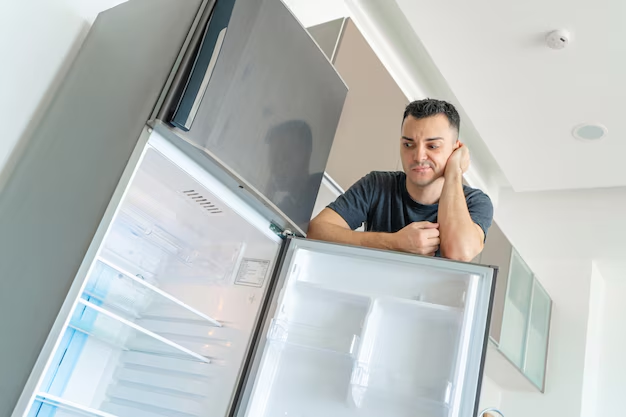Understanding Refrigerator Energy Consumption: How Many Watts Does Your Fridge Use?
Ever wonder why your fridge seems to be one of your home's biggest power consumers? You’re not alone. Understanding how many watts a refrigerator consumes can be key to managing your household energy usage, lowering your electricity bills, and making smarter appliance choices. Let's delve into what determines a refrigerator's power consumption and how you can maximize its efficiency.
The Basics of Refrigerator Energy Use
What Are Watts, and Why Do They Matter?
Watts are a measure of electrical power. Essentially, they determine how much electricity an appliance uses per hour. Knowing the wattage of a refrigerator helps you estimate its impact on your energy bill.
How Do Refrigerators Consume Energy?
Refrigerators keep your food cool by using a compressor to circulate refrigerant through a system of coils. This process involves cycling on and off to maintain a stable internal temperature, which varies depending on the refrigerator's settings and the surrounding environment.
Typically, refrigerators use between 100-800 watts. Energy consumption depends on:
- Size and type of refrigerator: Larger models or those with additional features like ice makers can consume more energy.
- Age: Older models are often less efficient than newer ones.
- Ambient temperature: Higher room temperatures can cause the fridge to work harder.
- Door usage: Frequent opening and closing can lead to energy spikes.
Factors Influencing Refrigerator Wattage
Size and Configuration
Different refrigerator models can have varying energy needs:
- Compact models: Generally consume less energy, often under 200 watts.
- Standard single-door models: Usually fall on the lower end of energy consumption.
- Double-door models: Tend to use more power, slightly above single-door variants.
- Side-by-side and French door models: Often include additional features like ice and water dispensers, leading to higher wattage requirements.
Energy Efficiency Ratings
Energy Star or other energy-efficient certifications indicate that a refrigerator meets certain criteria for low energy consumption. These models can significantly reduce energy usage compared to non-certified models. Look for these labels when purchasing a new unit to ensure better efficiency.
Usage Patterns
A family's usage patterns directly impact the wattage a refrigerator consumes. For instance, if the refrigerator door is frequently opened or kept open for extended periods, the compressor will run more frequently, increasing energy use. Additionally, the internal temperature setting also plays a role—lower settings can use more energy.
Calculating Refrigerator Energy Consumption
Estimating Electricity Costs
To calculate how much a refrigerator costs to run, you’ll need the following:
- Wattage of the refrigerator.
- Hours of operation per day: On average, a fridge runs for about 8 hours daily.
- Your electricity rate: This is usually given in cents per kilowatt-hour (kWh).
The formula is:
(Wattage * Hours per day / 1000) * Electricity rate = Cost per day.
For instance, if a refrigerator uses 350 watts, runs for 8 hours daily, and your electricity costs 12 cents per kWh, then:
(350 watts * 8 hours / 1000) * $0.12 = $0.336 per day.
Monitoring Monthly Usage
For a more comprehensive view, multiply the daily consumption by 30:
$0.336 * 30 = $10.08 per month.
This simple method helps visualize how much your refrigerator contributes to your overall energy bill.
Improving Refrigerator Efficiency
Optimal Placement
Location Matters: Place your refrigerator away from heat sources like ovens or direct sunlight. A cooler location helps reduce the workload on the compressor.
Regular Maintenance
- Clean the Coils: Dusty coils force the refrigerator to use more energy. Ensure coils are cleaned every few months.
- Check Door Seals: Well-sealed doors prevent cool air from escaping.
Smart Usage Tips
- Don’t Overstock: Air circulation is key to efficiency. Avoid overpacking to ensure even cooling.
- Set Proper Temperature: Keep the fridge between 37-40°F and the freezer at 0°F for optimal efficiency.
Upgrading Appliances
Consider upgrading if you own an older model. Modern refrigerators often have advanced features to improve efficiency and can save money in the long run.
The Broader Impact of Efficient Refrigeration
Environmental Considerations
Energy-efficient refrigerators significantly reduce carbon footprints. As households reduce energy waste, they help minimize environmental impact.
Financial Benefits
While higher efficiency models might have a higher upfront cost, long-term savings on energy bills make them a worthwhile investment.
Technological Innovations
Advancements in technology continue to make refrigerators more efficient. Features like inverter technology and smart sensors are becoming prevalent, allowing refrigerators to adapt energy usage based on content and usage patterns.
Key Takeaways for a Smarter Home
Here's a quick summary to keep your fridge energy efficient:
- 📏 Size Matters: Choose the right fridge size for your household needs.
- 🌿 Energy Star Certified: Opt for certified energy-efficient models.
- 📍 Strategic Placement: Keep your fridge away from heat sources.
- 🚪 Keep It Closed: Limit door opening to maintain temperature.
- 🔧 Regular Maintenance: Clean coils and check seals routinely.
- 📈 Monitor Usage: Use a power meter to track your fridge's energy consumption.
Understanding how many watts your refrigerator consumes and optimizing its usage is a practical step toward smarter energy use in your home. By following these insights, you can contribute to a more sustainable lifestyle while enjoying the comforts of modern appliances.
